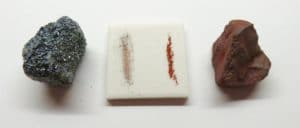Identifying Minerals
Vocabulary
Read the vocabulary terms to understand the reading better.
Mineral
A mineral is a solid made of only one substance and forms naturally.
Lustre
Lustre describes the way light interacts with the surface of a crystal, rock, or mineral.
Transparency
Transparency is how well light passes through something.
Translucent
A mineral is translucent when light passes through it, but you cannot see objects through it.
Opaque
A mineral is opaque when no light passes through it.
Geologists are scientists who study the structure of Earth. How do they identify minerals? They compare the properties, or characteristics, of the minerals. Here are a few of the properties geologists look at when identifying minerals.
Colour
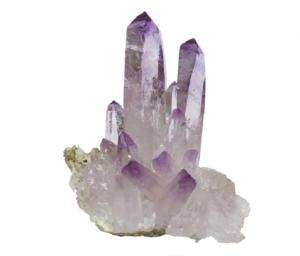
Looking at the colour of a mineral can be helpful. Some minerals can be many colours. Quartz can be clear, purple, yellow, green, brown, or pink. Malachite is always green, but lots of minerals are green. Colour is not enough to identify a mineral sample.
Lustre
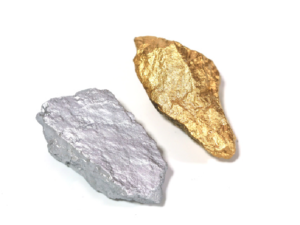
How well does the mineral reflect light? Imagine gold shining in the light. The shine is created by light reflecting off the gold. Geologists have a list of words to describe lustre. For example, gold has a metallic lustre and quartz has a glassy lustre. Turquoise has a waxy lustre, like the way light reflects off a candle.
Streak
If you rub a mineral across an unglazed piece of porcelain, it leaves a line of powder. This line of powder is the streak. The piece of porcelain is called the streak plate. A mineral’s streak is always the same colour. Quartz always leaves a white streak, even if the quartz is clear, purple, yellow, green, brown, or pink.
Photo courtesy of Karla Panchuk.
Transparency
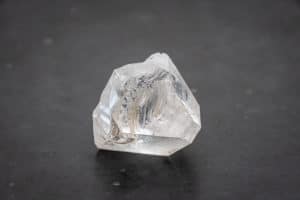
Geologists observe how light passes through the sample. This tells geologists about the sample’s transparency. Transparency has three basic categories:
- Transparent—You can see objects through the mineral.
- Translucent—Light passes through the mineral, but you cannot see objects through it.
- Opaque—No light passes through the mineral.
Hardness
Some minerals are very soft and easy to scratch. Other minerals are extremely hard and very difficult to scratch. Diamond is the hardest mineral on Earth. To test the hardness of a mineral, geologists use the Mohs’ Hardness Scale. This is named after Friedrich Mohs, who invented the scale. Mohs rated the hardness of some well-known minerals on a scale of 1 to 10, with 10 being the hardest.
The minerals in the scale can be used to test the hardness of a sample. Geologists use each mineral to scratch the sample. Only a mineral that is harder than the sample will scratch it. For example, topaz will scratch quartz. Feldspar will not scratch quartz. If topaz scratches the sample, they know the sample is not harder than topaz. This helps narrow down the choices.
Scientific reference books give the properties of many types of minerals. A geologist can look up the properties to identify a sample.
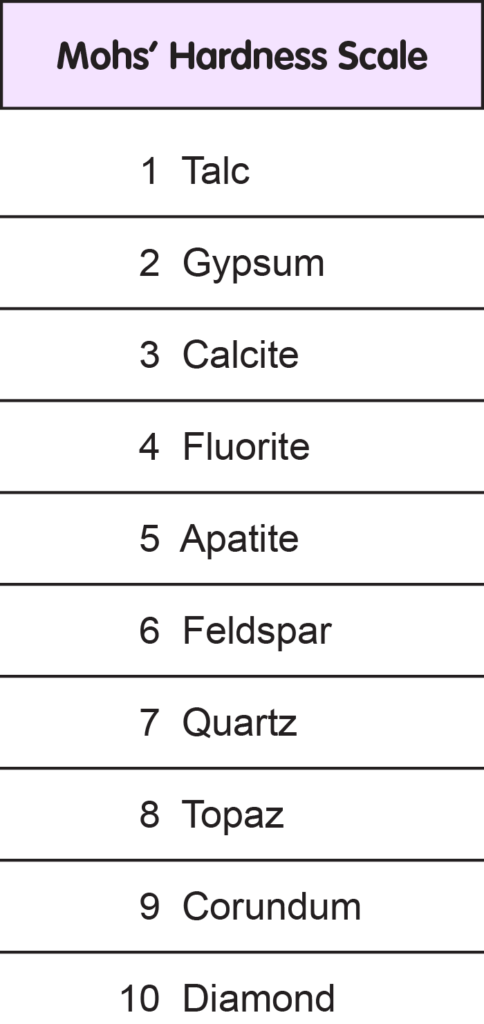
To learn more about identifying minerals, watch the video by Smile and Learn on YouTube.
Show What You Know!
Complete some questions about the reading selection by clicking “Begin Questions” below.

